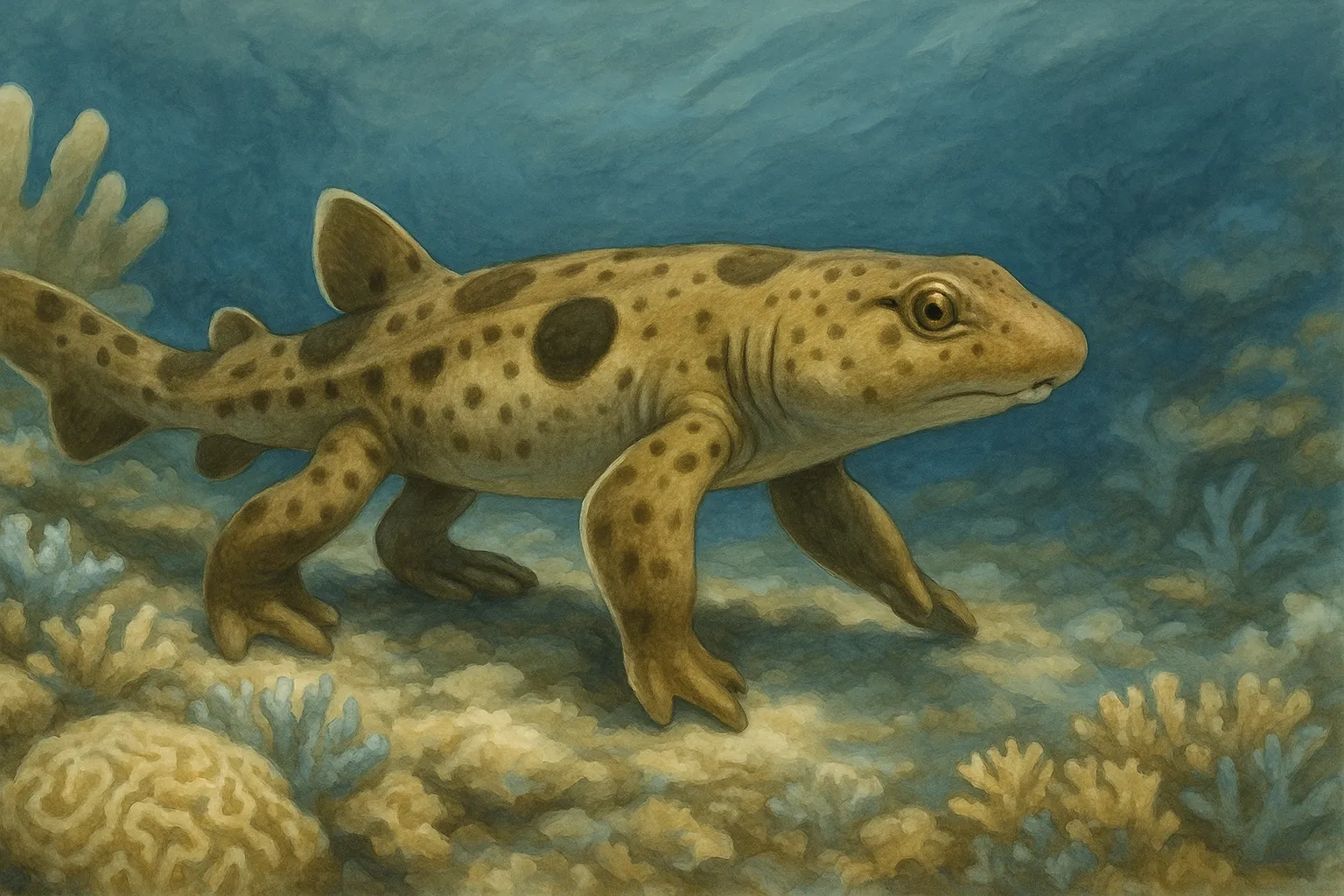Shark With Legs: Nature’s Walking Sharks
Shark With Legs: Nature’s Walking Sharks
The “shark with legs” is a science fiction name, but from the shallow reefs of Australia and Papua New Guinea are sharks that have evolved a marvelous means of locomotion—walking. Rather than developing on their bodies real feet, these amazing creatures—the epaulette sharks and their relatives—elevate their pectoral and pelvic fins and travel across the bottom, “stepping” over rocky terrain to search for food, refuge, and property.
Table of Contents
- Biological Background
- Species Spotlight: Epaulette Sharks
- The Mechanics of Shark “Walking”
- Evolutionary Drivers and Adaptations
- Capturing the Phenomenon: Research & Observation
- Sharks With Legs in Culture and Myth
- FAQs
- Conclusion
Biological Background
Sharks belong to the class Chondrichthyes, which is distinguished by cartilage rather than bony skeletons. Sharks are generally open-sea swimmers of substantial strength with sinuous bodies and stiff caudal fins. These, however, in relatively shallow rubble-strewn coral habitats, have to contend with highly topographic terrain—crevices, ledges, and tide pools—that demands precise low-speed handling. Over millions of years, bottom-dwelling sharks developed thicker, more robust pectoral and pelvic fins to support a “walking” gait so that they might forage in bodies of water beyond the reach of the rapid-swimming sharks and withstand periodic low-oxygen zones in the intertidal zones.
Species Spotlight: Epaulette Sharks
Poster species for walking sharks is the epaulette shark (Hemiscyllium ocellatum). So named because of the large eye-spot (or “ocellus”) just behind each pectoral fin, they are about 60 cm (2 ft) long and live on the Great Barrier Reef. During low tide, they “walk” out of drying pools by alternating each set of fins.
| Common Name | Scientific Name | Distribution |
|---|---|---|
| Epaulette Shark | Hemiscyllium ocellatum | Great Barrier Reef, Australia |
| Freycineti Epaulette Shark | Hemiscyllium freycineti | Papua New Guinea, Northern Australia |
| Hallstrom’s Epaulette Shark | Hemiscyllium hallstromi | Northern Australia |
The Mechanics of Shark “Walking”
Walking sharks employ a tetrapod-style walk with four fins:
- Front “legs”: Pectoral fins: Directed to the underside and press against it to propel the body forward.
- Rear “legs”: Additional propulsion and support.
- Alternating motion: An anterior fin on one side thrushes, and then the posterior fin on the other side—like a mammal’s cross-pattern gait.
- Body flexion: Placid wavelike spinal motions add to each thrust, allowing longer “strides.”
This speed-for-precision trade-off (≈0.1 m/s walking vs. 0.5 m/s swimming) of fin-based locomotion allows travel over rubble, crevices, and even small rock outcrops.
Evolutionary Drivers and Adaptations
A number of selective pressures most likely spurred the evolution of walking in sharks:
- Habitat Complexity: Coral reefs and intertidal environments contain maze-like environments where precision trumps speed.
- Predator Avoidance: Rocky, shallow habitats are navigated at slow, sneaky speeds to escape bigger predators.
- Oxygen Extremes: As tidepools become hypoxic at low tide, walking gives access to oxygen-rich microhabitats deeper in the water.
- Foraging Opportunities: Prey in crevices is only accessible by precise, fin-driven steps.
Capturing the Phenomenon: Research & Observation
Walk through sharks were first documented in the early 2000s by marine biologists using in-situ videography. Some of the key findings are:
- Energy Cost: Walking takes roughly 30% more energy per metre than swimming but offers novel foraging ground.
- Neuro-Muscular Control: Swimming CPGs also control walking, which shows evolutionary continuity.
- Conservation Implications: Coral-rubble communities need to be conserved as they are corridors of walking behaviour.
Sharks With Legs in Culture and Myth
Interest has been generated among the public by the sensational image of a shark “walking”:
- Viral Documentaries & Videos: Photos of epaulette sharks walking on reefs become viral on the internet.
- Cartoons & Children’s Books: Anthropomorphic illustrations of sharks which walk as derring-do heroes.
- Merchandise & Memes: From T-shirts with the caption “Shark With Legs” to lighthearted sketches and Photoshop jokes.
FAQs
Which shark can walk on land?
The epaulette shark (Hemiscyllium ocellatum) is the best-known walking shark. It “walks” by employing its strong pectoral and pelvic fins to step across shallow reefs and even out of drying tidepools.
How do sharks walk?
They employ a tetrapod-mode of movement: folding their pectoral and pelvis fins down and alternately pushing against the substrate, with minor spinal undulations adding to each push.
Are there other walking sharks?
Yes—other Hemiscyllium species (e.g., H. freycineti, H. hallstromi) also ambulate, though the epaulette shark is the one that has been studied in the most detail.
Conclusion
Although none of the sharks have real legs, the “walking sharks” of the Hemiscyllium genus reveal nature’s ingenuity—repurposing fins as efficient locomotory structures that bridge the gap between walking and swimming. Their unique gait not only illustrates the innovative power of evolution but also highlights conservation initiatives to safeguard the fragile reef habitats in which they reside.




